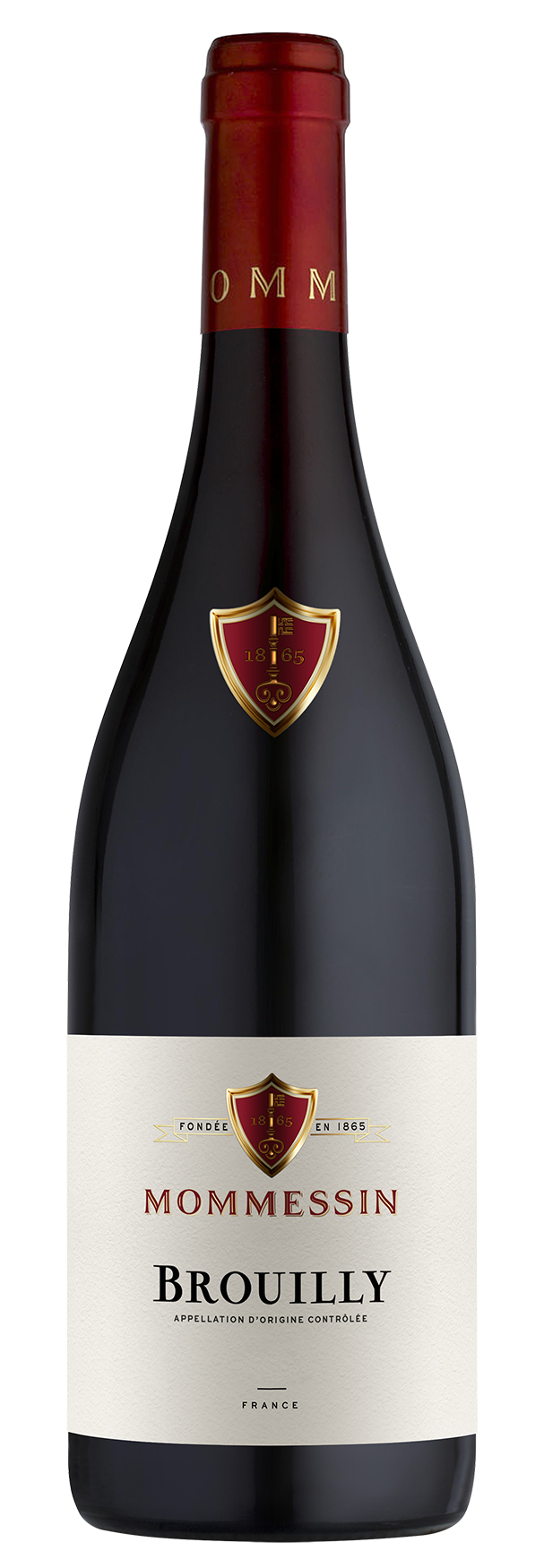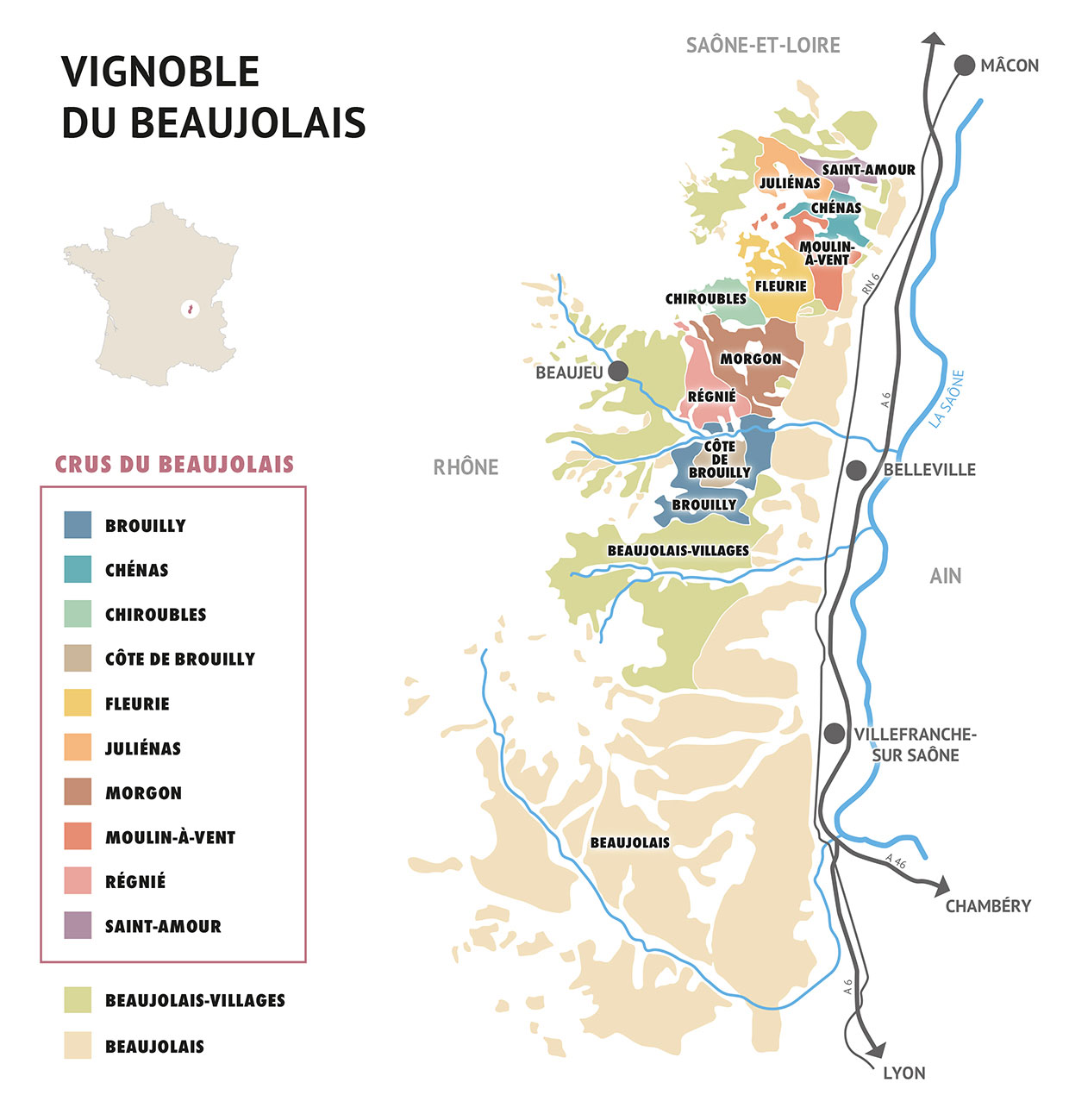Grape varietal
100% Black Gamay (with white juice).
Tasting notes
Colour: red ruby colour.
Nose: aromas of red and black fruits with scents of iris and violet.
Palate: a good structure with very great finesse. Silky wine with soft tannins and persistence on the palate.
Serving suggestions
Serve idelly at a temperature of 15 to 18°C. (59-64°F.).
Food and wine pairing
It is an excellent companion to light meats, chicken, cooked pork meats and jugged rabbit.
Ageing potential
Ready to drink, but can be kept 2 to 3 years.
Origins
As in the rest of Burgundy and Beaujolais, the name of a wine is nearly always that of a place: a general region, village, or specific vineyard within the village. The Brouilly cru is the largest of all the Beaujolais crus, coming from the central part of the region, quite precisely from the village of Saint Lager. It lies at the foot of the hill of the mont Brouilly. It is a very old vineyard which was once cultivates by the Romans.
Terroir
The soil is very diverse, from granite to alluvial loams neighbouring the Saône river plain. The blue stone of Brouilly is the hardest in Europe.
Vinification and maturing
Vintage : 2023
The first harvest began on September 4th. Despite a period of scorching heat, the grapes are superb, promising an exceptional vintage.
The intense heat at the end of August accelerated the maturation of our Gamay. This vintage is characterized by great heterogeneity between the plots. Some struggled with the extreme conditions, losing a lot of juice, while others resisted admirably. Several factors explain these variations: soil type, exposure, vine age, and yield. The differences between early and late-ripening zones are minimal, reflected in the variability of the analytical data from one cuvée to another, with potential alcohol levels ranging from 12° to 14°. Although we anticipated a bountiful harvest in the spring, we are seeing a significant reduction in volumes. The berries have thick skins and reveal aromas of raspberry liqueur, cherry, as well as notes of violet, dark chocolate, and even pear!
The musts have a high sugar concentration and marked acidity. This year, we favored destemming to prolong the maceration of our Gamays. In addition to the traditional whole cluster semi-carbonic maceration, we opted for hot pre-fermentation maceration to maximize color extraction from the grapes most affected by the drought.




